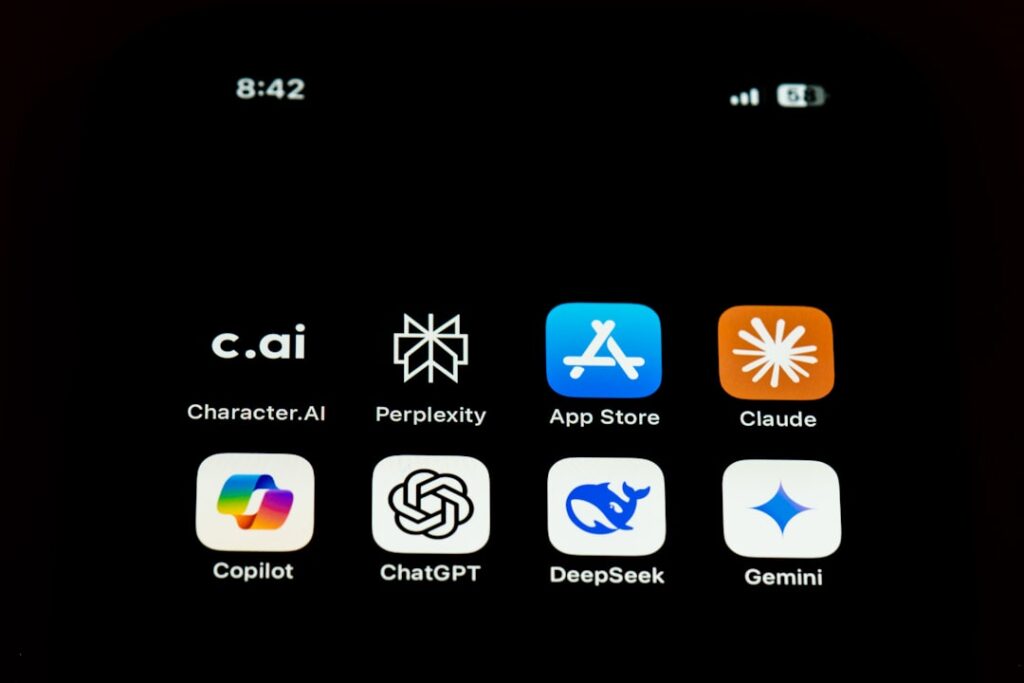Boost Your Efficiency with AI Productivity Apps
In today’s fast-paced world, leveraging technology to enhance efficiency has become essential. AI productivity apps have emerged as key players in this digital transformation, helping individuals and teams streamline their work processes. This article explores various AI tools that can significantly boost productivity, offering insights into their functionalities and benefits.
What Are AI Productivity Apps?
AI productivity apps are software applications that utilize artificial intelligence to improve the efficiency and quality of work. These tools automate repetitive tasks, analyze data for better decision-making, and provide personalized recommendations, allowing users to focus on more strategic aspects of their work.
Top AI Productivity Apps to Consider
1. Notion
Notion is an all-in-one workspace that combines notes, tasks, databases, and calendars. Its AI features enable users to automate tasks, create templates, and even generate content suggestions. This holistic approach allows teams to collaborate effectively while keeping everything organized.
2. Trello with Butler Automation
Trello is a well-known project management tool, and its Butler feature harnesses AI to automate workflows. Users can set triggers for repetitive actions, such as moving cards or assigning tasks, thus reducing manual efforts and enhancing project tracking.
3. Grammarly
Grammarly is an AI-powered writing assistant that enhances writing quality through real-time feedback. It corrects grammatical errors, suggests style improvements, and ensures clarity, making it an essential tool for professionals who rely on written communication.
Benefits of Using AI Productivity Apps
- Time-saving: Automating mundane tasks frees up valuable time for other high-priority activities.
- Enhanced Accuracy: AI tools minimize human errors in various processes, leading to better outcomes.
- Data-Driven Insights: AI productivity apps analyze large data sets, providing actionable insights that can inform decision-making.
Integrating AI Productivity Apps into Your Workflow
To maximize the benefits of AI productivity apps, organizations should consider the following steps:
- Assessment: Identify bottlenecks in current workflows that could benefit from automation.
- Selection: Choose AI apps that align with your specific needs and workflow requirements.
- Training: Invest time in training your team to ensure they are proficient with new tools.
Conclusion
AI productivity apps are redefining how we approach work, making tasks more manageable and enhancing overall efficiency. By carefully selecting and integrating these tools into your workflow, you can unlock new levels of productivity and focus on what truly matters in your professional journey.
Understanding AI Productivity Apps
In today’s fast-paced world, efficiency is paramount, and AI productivity apps are at the forefront of enhancing our capabilities. These tools leverage artificial intelligence to streamline tasks, making it easier to manage time and resources effectively. From intelligent scheduling systems to automated email replies, AI productivity apps can transform the way individuals and teams operate, reducing mundane tasks and allowing more focus on strategic initiatives.
The Impact of AI on Time Management
Time management is a critical skill in any work environment, and AI productivity apps are increasingly becoming essential allies in this area. Tools like Smart Calendars and Task Managers utilize machine learning algorithms to prioritize tasks based on deadlines, urgency, and user behavior. This allows users to allocate their time more efficiently, ensuring that they focus on high-impact activities. As a result, individuals can experience less stress and a more organized approach to their daily responsibilities.
Common Features of AI Productivity Apps
When exploring the landscape of AI productivity apps, several common features stand out that can significantly improve workflow.
Collaborative Features
Many AI productivity apps are designed with collaboration in mind, enabling teams to work together seamlessly, irrespective of geographical limitations. These platforms often include features like shared calendars, real-time document editing, and communication tools powered by AI. By fostering better collaboration, teams can address challenges faster and innovate at a higher pace.
Data-Driven Insights
Another significant benefit of AI productivity apps is their ability to provide data-driven insights. By analyzing usage patterns and performance metrics, these tools can identify bottlenecks and suggest actionable improvements. For example, an AI-driven workload management tool might highlight areas where team members are overwhelmed and recommend reallocation of tasks. This enables managers to make informed decisions, increasing overall productivity and satisfaction within the team.
Choosing the Right AI Productivity App for Your Needs
With numerous AI productivity apps available, choosing the right one can feel like a daunting task. It’s crucial to assess your specific needs and workflow dynamics before committing to a particular tool. Factors to consider include user-friendliness, integration capabilities with existing software, and the scalability of the app as your team grows.
Trial and Evaluation
Many AI productivity apps offer trial versions which allow users to explore functionalities without any commitment. This provides an invaluable opportunity to assess the app’s effectiveness in real-life scenarios. During this trial phase, pay attention to how well the app integrates with your existing workflow and whether it genuinely enhances productivity. Gathering feedback from team members can also guide your decision-making process.
The Future of AI in Productivity
Looking ahead, the evolution of AI productivity apps is expected to continue pushing boundaries. As advancements in artificial intelligence become more sophisticated, we can expect these tools to become even more intuitive, adapting to our specific habits and preferences. With enhanced automation capabilities and predictive analytics, AI will likely redefine what it means to be productive in the modern workplace.
In conclusion, AI productivity apps are not just trends; they are essential components of an efficient work environment. By leveraging these tools strategically, individuals and teams can maximize their potential and achieve their goals with greater ease.


